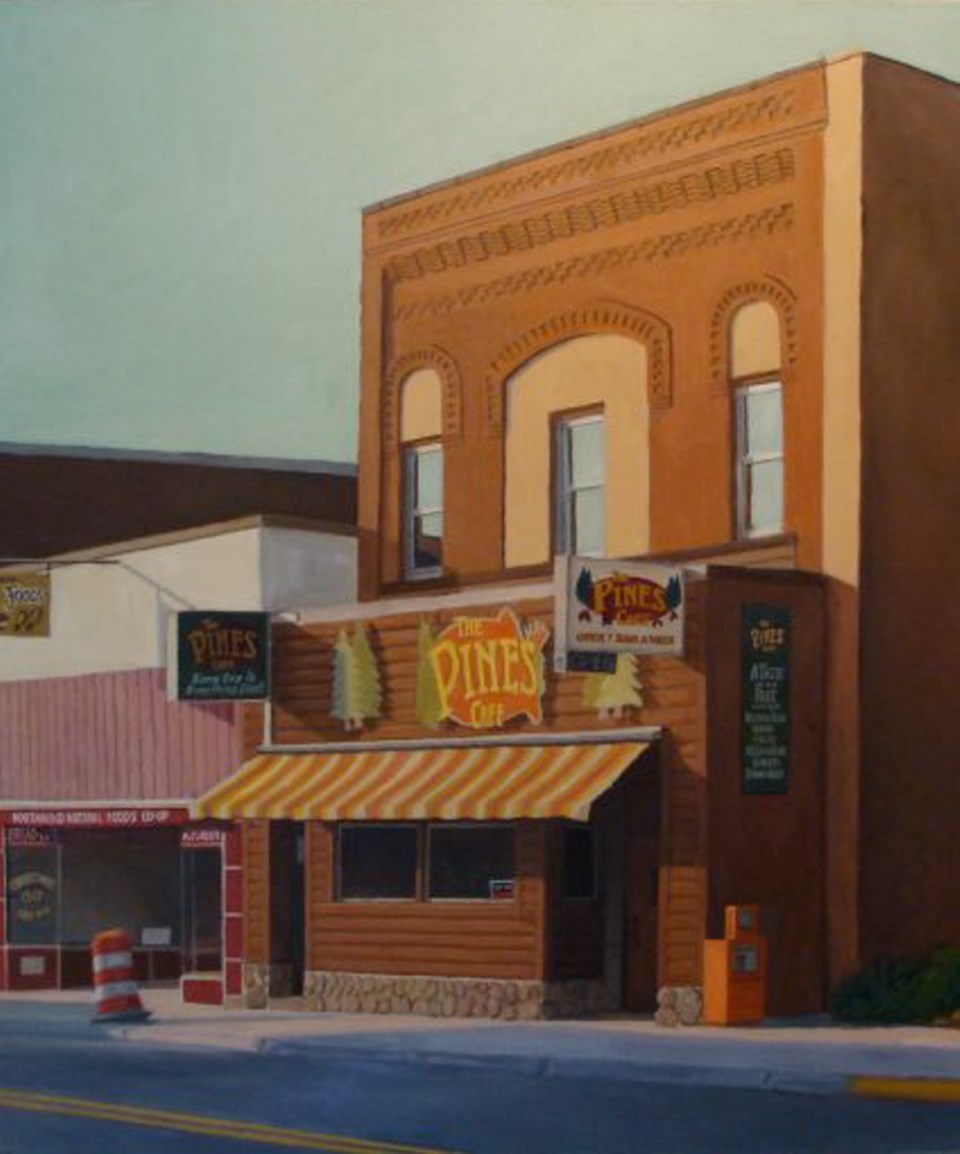 Helen Rogak speaks confidently and with patience. The things she says might seem simple and self-evident, but I found after spending an hour talking with her, I took away much that will stay with me.
Helen Rogak speaks confidently and with patience. The things she says might seem simple and self-evident, but I found after spending an hour talking with her, I took away much that will stay with me.
Rogak grew up outside the town of Ironwood in Michigan. Equipped with a fine-art degree from the University of Michigan, she came to Victoria in 1967, but she returns to her hometown every couple of years for family reunions. On a recent visit, she took a walk in the golden light of evening and photographed some of the buildings she remembered from her youth.
“It was six o’clock on the fourth of July — the sun was just so gorgeous at the time,” she told me. “Nobody was around; they were all at the next-door town at the Independence Day parade.” The quiet atmosphere in Ironwood suited Rogak.
“I really don’t like painting cars and pedestrians.” When I mentioned to her the slightly haunted aspect of the empty streets in her paintings of Ironwood, she said the viewers can make what they want of it.
Ironwood was built by immigrants.
“It was a very rich town in the 1920s,” Rogak explained. “There were iron mines all over the place, and trees to be cut down.”
The population was 30,000 when the buildings in her paintings were being built. She indicated her painting of the neo-classical Municipal Building.
“There are gorgeous murals in there, and a swimming pool. It’s so luxurious, like a little palace.”
“It was a very nice town to grow up in,” Rogak recalled fondly, “with good schools that taught music, art and speech — all the kinds of things which I took for granted as a child and which don’t exist for kids these days.”
According to her, the town was slowly dying, with a population of 14,000. But, surprisingly, it has now turned into a tourist centre.
“It has the biggest ski hills between Chicago and the Rockies, and you can even find a decent restaurant there. Not country bumpkins at all.”
Rogak’s long career as a painter has taken place in Victoria, where she is known for her rather impressionist landscapes shown at Fran Willis Gallery in earlier days, and in Calgary. I mentioned that perspective drawing must have been a challenge in this show, a series of large oil paintings of buildings. She laughed.
“I just squared it up from the photograph. How hard is that?”
Though she is an artist who has often stood and painted en pleine air, now she works in the studio on paintings that are as much as two metres across.
Her evenly painted surfaces appear simple, but on closer inspection you see she has painted each area “over and over and over again,” to get the tone and colour right.
“I tend to like to work from dark into light. First I cover up all the white with a colour. It could be any colour, but it won’t be ‘the right one,’ the one that you end up with. And then I search for the light,” she explained. “And I eventually get there. You know, it’s not just ‘pick up a paintbrush put it on and you’re done.’ ”
There is an echo of the work of Edward Hopper (1882-1967), painter of the American scene, in Rogak’s work. Yet she isn’t melancholy, as Hopper seemed to be.
And while Ironwood truly is an American town, there is no political comment implied. The Catholic Church and the Elks Lodge could easily be in Victoria.
Rogak concentrates on smaller moments: The darkness within a furniture shop is cut through by a shaft of daylight, picking out a sofa in the corner of the window display. Within these sunlit streets Rogak is on the lookout for beautiful incidences of light and shadow.
“I love doing shadows. This is a big part of the deal — to have a shadow in every painting, and to work in shadows,” Rogak explained. She tends to begin her painting with darkness, and slowly work toward the light.
“If I had my way I would work more in darkness,” she confessed. “Just a little light in the right place, against the darkness.”
She also loves painting reflections on windows.
“It takes along time but that’s OK,” the artist commented. “I don’t care. I’ve got all the time in the world.”
And another of her pleasures is the painting of words.
“I just love them. Maybe I’ll paint more signs.”
She pointed out a lengthy notice board she had painted, which advertised root beer, floats, shakes, malts and banana splits. In fact, Rogak loves the activity of painting, no matter what the subject.
Perhaps it is not the subject but the perfect relationship between tones and colours that leads her on.
“I just have to keep on poking away until they work,” Rogak said. “Until they speak to each other — which is in front, and which is behind. Somehow I just do it.” So she has no formula, no recipe, no rule?
“It’s a question of seeing it,” she emphasized. “You can’t really see what’s going on — and then finally you see it. That’s the only way I can say it. You have to see it. That’s just the way we work.”
Ironwood: Paintings by Helen Rogak, at Martin Batchelor Gallery, 712 Cormorant St., 250-385-7919, until Feb. 4.



